A Central Park field trip with Professor Steven L. Goldstein ’76.
Columbia College | Columbia University in the City of New York
A Central Park field trip with Professor Steven L. Goldstein ’76.

Photographs by Jörg Meyer
When I responded that I only knew the barest basics and gave him a weak description of plate tectonics, he was prepared. A quick screenshare later, I was getting a crash course from Goldstein’s class (which he co-teaches with Professor Sidney Hemming) “Earth’s Environmental Systems: The Solid Earth,” flying through a billion years of Earth’s history in 30 minutes. For the uninitiated:
Rodinia, an ancient supercontinent, covers much of Earth.
The Iapetus Ocean opens up near Rodinia’s proto-North America landmass.
The Iapetus Ocean closes and a large volcanic landmass collides with what is now the Eastern coast of North America.
The Pangea supercontinent is assembled.
Pangea begins to break up.
The Atlantic Ocean begins to form.
Africa drifts away from North America.
Northern North America is covered by a glacier during the last Ice Age.
And then we come to the present, a beautiful August day in New York City. Goldstein and I met in person a few days after our call to take a field trip to Central Park, where this billion years of movement, creation and destruction is on full display, if only you know where to look. And Goldstein, the Higgins Professor of Earth and Environmental Sciences, knows exactly where to look.
Raised in Maryland, Goldstein describes himself as “a totally accidental Columbia student”; he transferred to the College in his junior year, looking for the perfect blend of a strong science department and good general studies. After a brief stint at Harvard to earn an M.A., he returned to Columbia to earn an M.Phil. and a Ph.D., and, after a decade at the Max-Planck-Institut für Chemie in Germany, joined the Lamont-Doherty Earth Observatory in 1996. On August 1, the longtime Columbian added another feather to his cap: He began as interim director of LDEO, the scientific research center of the Columbia Climate School.
In a message to the LDEO community announcing Goldstein’s appointment, interim dean Jeff Shaman spoke to Goldstein’s unique qualifications, including his deep background in research — he has published more than 170 peer-reviewed papers — and awards celebrating “his outstanding contributions to the fields of volcanology, geochemistry and petrology.” Goldstein’s popular teaching methods were also noted: “... he has been recognized for excellence in teaching across Columbia and received the 2022 Great Teacher Award from the Society of Columbia Graduates,” Shaman wrote.
“What I really like to do is go out in the field, look at the rocks and learn about the rocks,” says Goldstein. I asked him to take me on one of the same excursions he leads for students, to showcase the geological history that can be found right in New Yorkers’ backyard.
To kick things off, it’s important to know that Central Park is full of schist — “Manhattan Schist” to be exact, a type of rock made of metamorphosed sand, silt and mud. The Manhattan Schist was formed roughly 500–440 million years ago from sediment dumped in the Iapetus Ocean. You also need to know that the Hudson River is technically a fjord, carved by a glacier during the last Ice Age.
Armed with my newfound geologic knowledge and Goldstein’s decades of expertise, we headed into the park. “It’s going to be like riding a bike,” says Goldstein, adding that once you know the secret history hiding in the rocks, “you’re going to see it everywhere.”
Standing on Umpire Rock, a short walk from the park’s Columbus Circle entrance, you can see evidence of sedimentary bedding in the rocks’ lines. The sedimentation was cyclical, with coarse, sandy layers alternating with fine clay layers, slowly eroding over millions of years into the Iapetus Ocean.

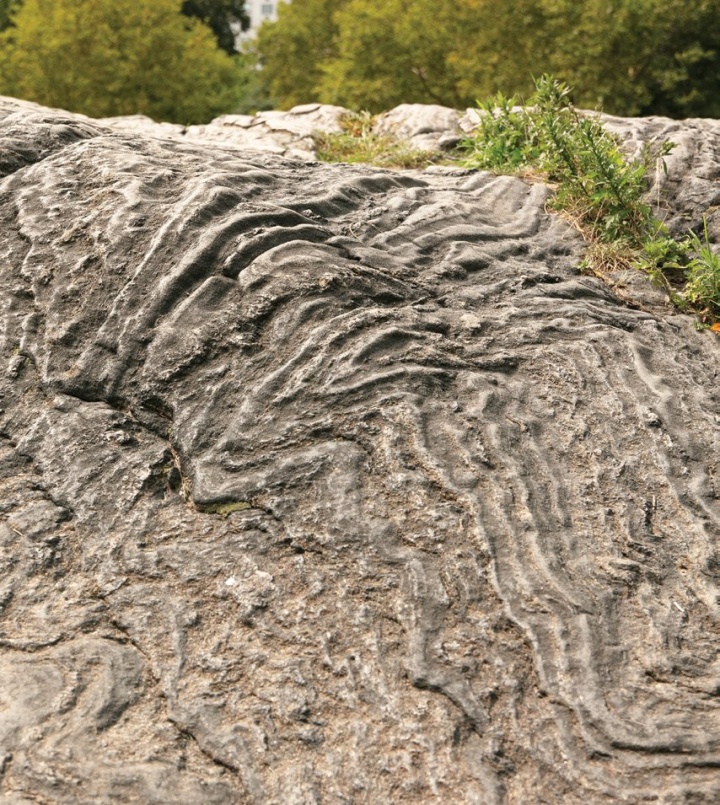
After the soft sediments were deeply buried, heated and baked into hard rock, molten rock (magma) cut dikes (sheets of rock that cut across older rock beds) in the rock. You can see the lines of the lighter-colored magma cutting across the sedimentary bedding.
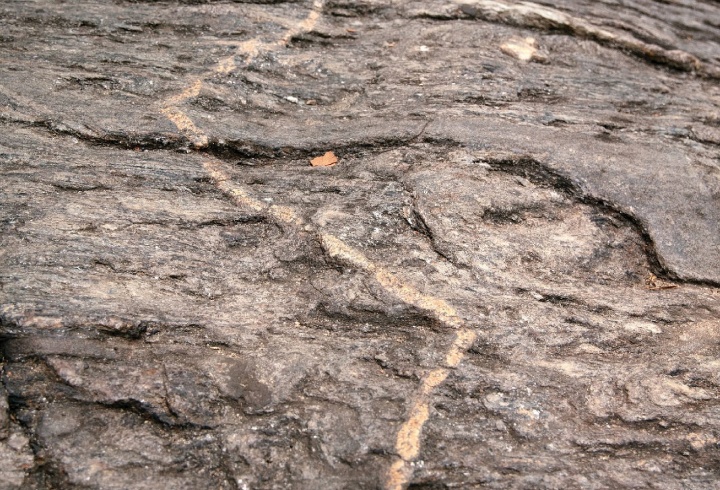
Glacial Striations can be seen along the sedimentary bedding, where the slow flow of glacial ice from the last Ice Age carved out paths in the rock.
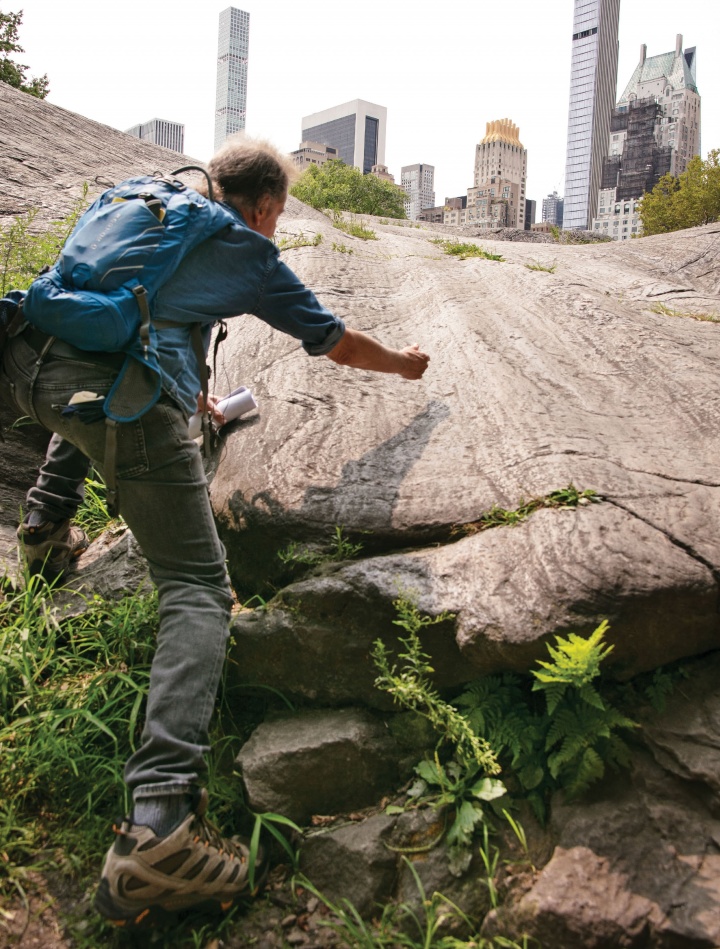
Erratic boulders are rocks that were transported from somewhere else; the erratics in Central Park are evidence of the glacier that covered Manhattan during the last Ice Age. Erratics can be easily identified; they are clearly different from the schist that comprises most of lower Manhattan.

A Roche Moutonée is a geological feature formed by glaciers moving over rocks, characterized by a smooth, shallow sloping backside and a steep drop-off.
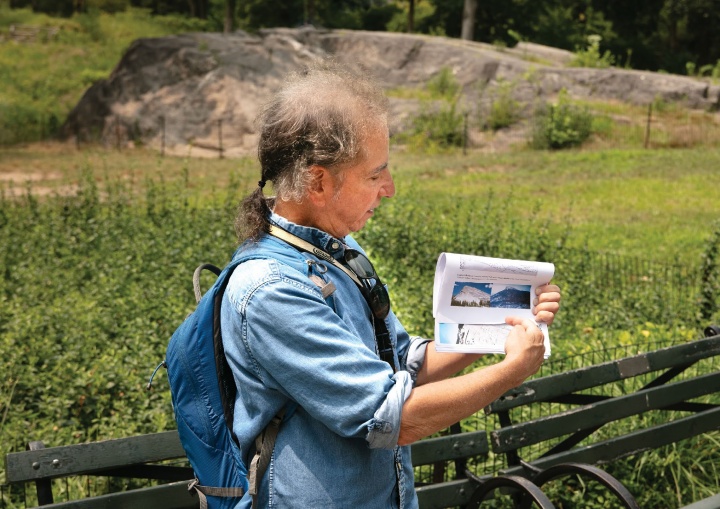
A Roche Moutonée is also defined by its craggy frontside and “plucking” — pieces of rock ripped off the stone.
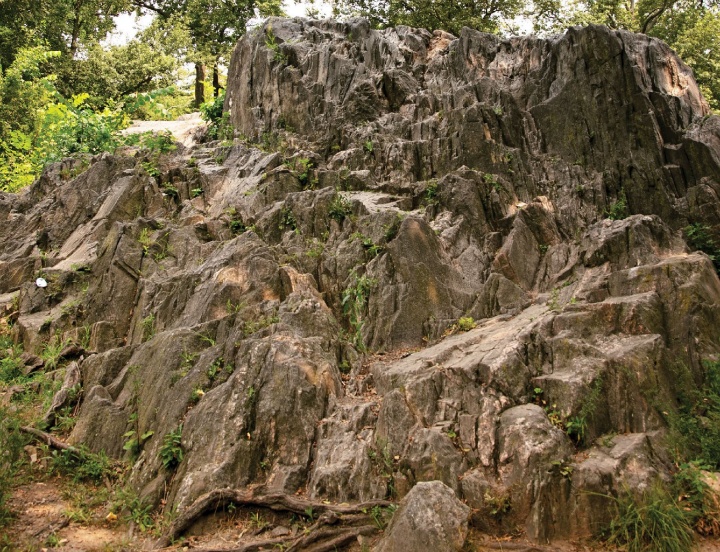

Published three times a year by Columbia College for alumni, students, faculty, parents and friends.
Columbia Alumni Center
622 W. 113th St., MC 4530, 6th Fl.
New York, NY 10025
212-851-7852
cct@columbia.edu

Columbia Alumni Center
622 W. 113th St., MC 4530, 4th Fl.
New York, NY 10025
212-851-7488
ccalumni@columbia.edu